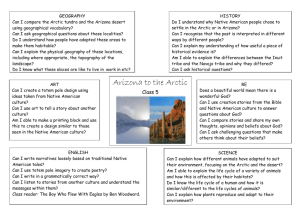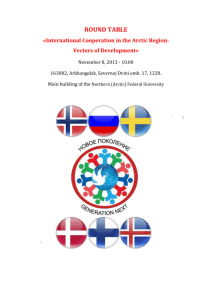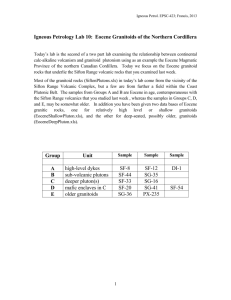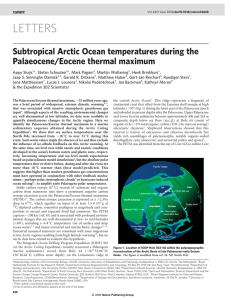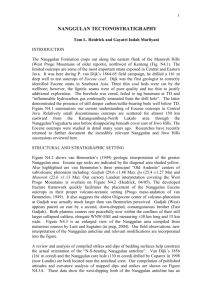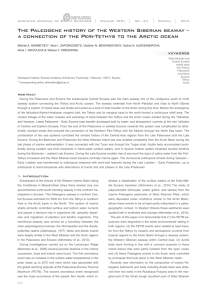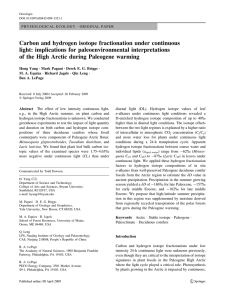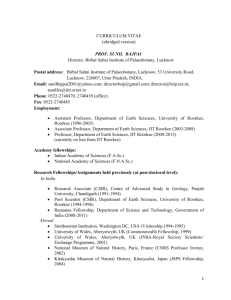Document 7160760
advertisement
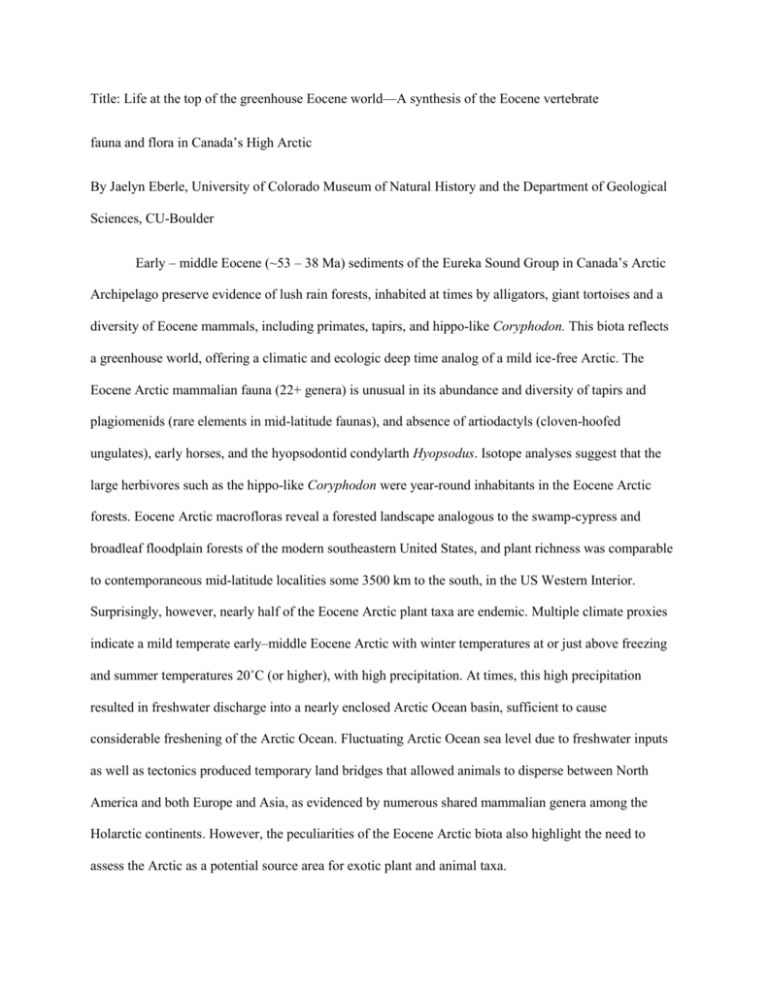
Title: Life at the top of the greenhouse Eocene world—A synthesis of the Eocene vertebrate fauna and flora in Canada’s High Arctic By Jaelyn Eberle, University of Colorado Museum of Natural History and the Department of Geological Sciences, CU-Boulder Early – middle Eocene (~53 – 38 Ma) sediments of the Eureka Sound Group in Canada’s Arctic Archipelago preserve evidence of lush rain forests, inhabited at times by alligators, giant tortoises and a diversity of Eocene mammals, including primates, tapirs, and hippo-like Coryphodon. This biota reflects a greenhouse world, offering a climatic and ecologic deep time analog of a mild ice-free Arctic. The Eocene Arctic mammalian fauna (22+ genera) is unusual in its abundance and diversity of tapirs and plagiomenids (rare elements in mid-latitude faunas), and absence of artiodactyls (cloven-hoofed ungulates), early horses, and the hyopsodontid condylarth Hyopsodus. Isotope analyses suggest that the large herbivores such as the hippo-like Coryphodon were year-round inhabitants in the Eocene Arctic forests. Eocene Arctic macrofloras reveal a forested landscape analogous to the swamp-cypress and broadleaf floodplain forests of the modern southeastern United States, and plant richness was comparable to contemporaneous mid-latitude localities some 3500 km to the south, in the US Western Interior. Surprisingly, however, nearly half of the Eocene Arctic plant taxa are endemic. Multiple climate proxies indicate a mild temperate early–middle Eocene Arctic with winter temperatures at or just above freezing and summer temperatures 20˚C (or higher), with high precipitation. At times, this high precipitation resulted in freshwater discharge into a nearly enclosed Arctic Ocean basin, sufficient to cause considerable freshening of the Arctic Ocean. Fluctuating Arctic Ocean sea level due to freshwater inputs as well as tectonics produced temporary land bridges that allowed animals to disperse between North America and both Europe and Asia, as evidenced by numerous shared mammalian genera among the Holarctic continents. However, the peculiarities of the Eocene Arctic biota also highlight the need to assess the Arctic as a potential source area for exotic plant and animal taxa.




